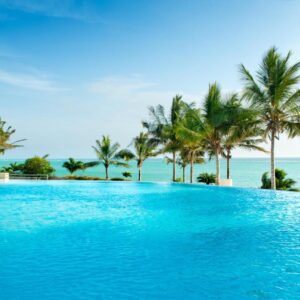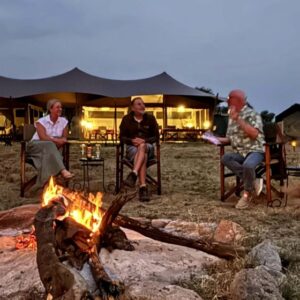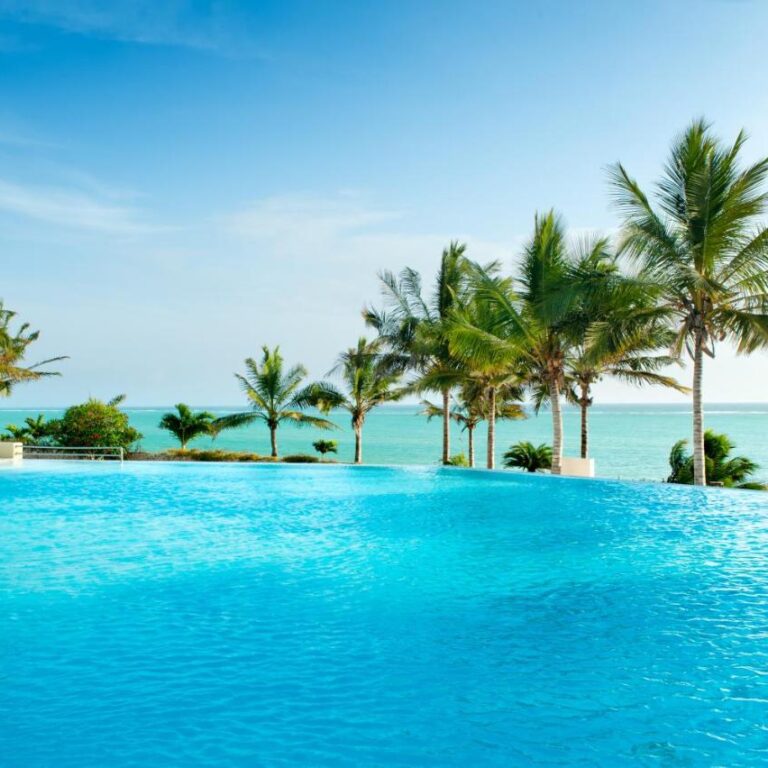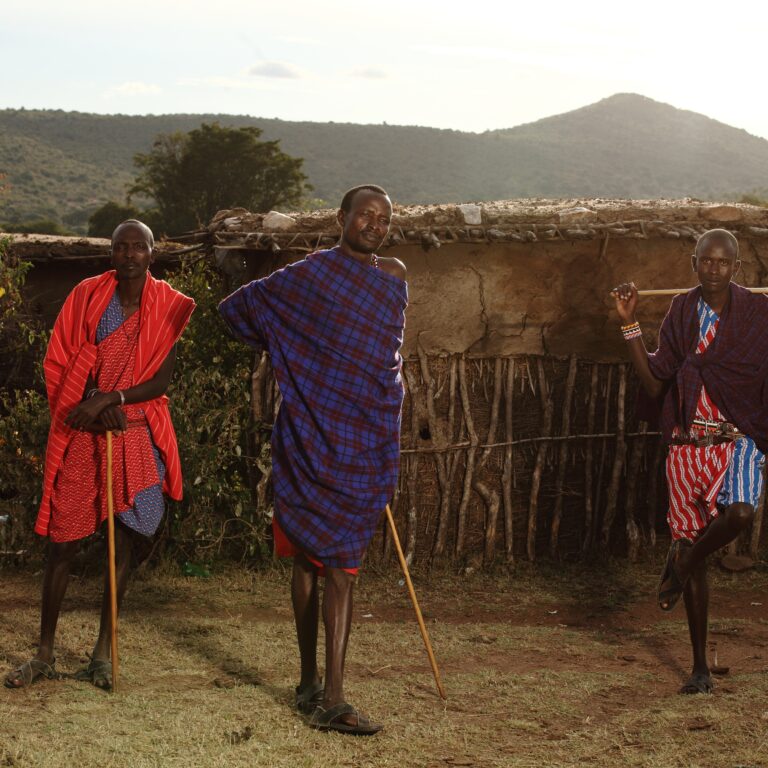When it comes to climbing iconic mountains in East Africa, two peaks immediately come to mind: Mount Meru and Mount Kilimanjaro. While both mountain hills are located in Tanzania and offer awe-inspiring vistas, they provide unique experiences for trekkers. Whether you’re choosing between the two for a challenge or to enjoy breathtaking views, understanding their differences will help you make an informed decision. Let’s break down the key factors—distance, duration, accommodation, scenery, acclimatization, and more—to help you choose which mountain suits your adventure style. Not only is Kilimanjaro (or Kili as the mountain is affectionately known) Africa’s highest peak at 5895m, it is also the highest free-standing mountain in the world. Neighbouring Mt Meru, though not as high, at 4566m, is considered to be a more technical climb though not as physically demanding as Kili.
Mount Meru vs Kilimanjaro Distance
Mount Meru: Standing at 4,566 meters (14,980 feet), Mount Meru is located within Arusha National Park, just a short drive from the town of Arusha. The trek covers about 65 kilometers (40 miles), with climbers usually starting from the Momella Gate and making their way through lush forests, open savannahs, and finally up to the summit.
Mount Kilimanjaro: At 5,895 meters (19,341 feet), Kilimanjaro is the highest mountain in Africa and one of the tallest free-standing mountains in the world. The distances vary depending on the route, but on average, trekkers cover around 70 to 100 kilometers (43 to 62 miles). Kilimanjaro’s most popular routes include Machame, Marangu, and Lemosho, each offering a unique perspective of the mountain.
Distance Comparison: Mount Meru is slightly shorter in distance than Kilimanjaro, but the rugged terrain on both offers unique challenges.
Mount Meru vs Kilimanjaro Duration
Mount Meru: The trek to the summit of Mount Meru typically takes 4 days. The schedule is more compact, allowing climbers to enjoy the trek without feeling rushed. But with less time to acclimatize compared to Kilimanjaro.
Mount Kilimanjaro: The typical trek to Kilimanjaro’s summit takes 5 to 9 days depending on the route chosen. Longer treks are often recommended for better acclimatization, which improves your chances of summiting successfully.
Duration Comparison: Mount Meru’s climb is shorter, while Kilimanjaro offers a more extended trekking experience.
Mount Meru vs Kilimanjaro Accommodation
Mount Meru: Accommodations for Mount Meru are relatively basic. Climbers stay in mountain huts at various campsites along the trail. The huts are often cozy but can be rustic, with simple amenities. Expect shared bathrooms and communal areas.
Mount Kilimanjaro: For Kilimanjaro, the accommodation can range from simple tents (on most routes) to more luxurious lodges along the routes like the Marangu route, which features hut-based accommodations. The tents on Kilimanjaro are typically more spacious than those on Meru. But overall, both mountains offer basic amenities in a natural setting.
Accommodation Comparison: While both mountains offer basic to moderate accommodations. Kilimanjaro generally has a wider range of options, particularly in terms of comfort.
Mount Meru vs Kilimanjaro Map
Mount Meru: Mount Meru is located within Arusha National Park, and its trails are well-marked. The trekking route is relatively straightforward, with the majority of the paths being traversed by well-established hiking trails.
Mount Kilimanjaro: Kilimanjaro, as a more popular and massive mountain, is serviced by a multitude of routes, each requiring its own set of maps and guidance. The routes vary in difficulty, scenery, and accessibility, and are more complex compared to Mount Meru.
Map Comparison: Kilimanjaro’s map is more varied due to the different routes. While Mount Meru’s trail is more contained within a single park.
Mount Meru vs Kilimanjaro Ascend/Descend
A Mount Meru: Climbers ascend and descend via the same route on Mount Meru. Which means the path is generally simpler but can become tiring due to its steep sections.
Mount Kilimanjaro: On Kilimanjaro, most routes involve ascending via one path and descending via a different route. This offers trekkers the opportunity to experience different terrain, which can be a refreshing change after reaching the summit.
Ascend/Descend Comparison: Kilimanjaro offers more variety in terms of the routes you ascend and descend, whereas Mount Meru typically involves a round trip up and down the same path.
Mount Meru vs Kilimanjaro Scenery
Mount Meru: The scenery on Mount Meru is a beautiful combination of tropical rainforests, lush vegetation, and rugged volcanic terrain. As you climb, you’ll pass through different ecological zones, offering glimpses of wildlife, including buffalo, giraffes, and various bird species. You will reach the Mount Meru summit, Socialist Peak (4566 m) right at sunrise. The scenery there is stunning; you will see Mount Kilimanjaro in close distance.
Mount Kilimanjaro: The landscape on Kilimanjaro is incredibly diverse. Ranging from lush rainforests at the base to alpine deserts and glaciers near the summit. On Kilimanjaro, you’ll experience sweeping vistas of the plains below, as well as ever-changing environments depending on the route taken.
Scenery Comparison: Kilimanjaro offers a more varied landscape and iconic views. Mount Meru provides a more intimate, forested experience with abundant wildlife.
Mount Meru vs Kilimanjaro Acclimatization
Mount Meru: While Meru has lower. It still provides an excellent opportunity for acclimatization before tackling Kilimanjaro. Climbers who do Mount Meru first can benefit from the altitude gains and allow their bodies time to adjust to higher elevations. There are mountain huts on Mt Meru, so you do not have to camp. This acclimatisation on Mount Meru makes an enormous difference to the climb on Kilimanjaro.
Mount Kilimanjaro: Acclimatization on Kilimanjaro is a more critical factor due to its higher elevation. Longer routes, such as Lemosho or Machame, provide more time for proper acclimatization. Which increases the chances of reaching the summit. Additionally, if you’re considering climbing Mount Kilimanjaro, trekking to the Meru summit first is an excellent way to prepare and acclimatize to the high altitude, which will be of great help on the “Roof of Africa”.
Acclimatization Comparison. Kilimanjaro has a greater need for acclimatization due to its higher altitude. While Mount Meru is a good preparatory climb.
Mount Meru vs Kilimanjaro Success Rate
The Mount Meru. The success rate on Mount Meru tends to be higher because of the shorter climb and lower altitude, with many climbers reaching the summit without issue.
Mount Kilimanjaro: Kilimanjaro has a slightly lower success rate compared to Meru. Primarily because of the altitude and the difficulty of longer routes. However, success rates increase with proper preparation and acclimatization.
Success Rate Comparison. Mount Meru generally has a higher success rate, while Kilimanjaro’s success rate depends heavily on the duration and proper acclimatization.
Mount Meru vs Kilimanjaro Crowds
A Mount Meru. Due to its lower profile and being somewhat overshadowed by Kilimanjaro, Mount Meru tends to have fewer climbers, providing a more tranquil and less crowded experience. Fewer Crowds: Unlike Kilimanjaro, Mt. Meru sees fewer visitors, allowing for a more peaceful and intimate trek. Scenic Views: The trail takes you through lush rainforests, alpine meadows, and volcanic landscapes, with stunning views of Mt.
Mount Kilimanjaro: Kilimanjaro attracts more trekkers, especially during peak seasons. As a result, it can feel crowded at times, especially on popular routes like the Machame and Marangu routes. Between 30,000 to 50,000 people climb Kilimanjaro annually, most of whom visit during the dry seasons. These dry seasons total 7 out of 12 months. If we divide the number of visitors by 7 months, we get an average of 4,285 to 7,124 people per month. Taken further, that’s 142 to 237 people starting a climb every day.
Crowd Comparison: Mount Meru offers a more peaceful and isolated experience compared to Kilimanjaro’s busy trails.
Mount Meru vs Kilimanjaro Difficulty
Mount Meru: Mount Meru is considered a moderately challenging climb, but it’s more accessible compared to Kilimanjaro. It’s a great option for those who want to test their climbing skills in a beautiful setting without facing the extreme challenges of a higher peak. Finally, although Meru is smaller than Kilimanjaro, it is widely considered to be a more demanding trek, so you will still have bragging rights upon your return. Many experienced climbers decide to climb Mount Meru in preparation for a Kili trek.
Mount Kilimanjaro: Kilimanjaro is more physically demanding, particularly due to its higher altitude. While there are routes suitable for beginners, the sheer altitude and duration can pose significant challenges.
Difficulty Comparison. Kilimanjaro is more difficult due to the higher altitude and longer duration of the climb, while Mount Meru is a more moderate challenge.
Mount Meru vs Kilimanjaro Routes
The Mount Meru: Mount Meru offers a single primary route to the summit, making it more straightforward for climbers to follow. The Momella route – which starts at Momella gate, on the eastern side of the mountain – is the most common route for climbers to reach the peak.
Mount Kilimanjaro: Kilimanjaro boasts several routes, including the popular Machame, Marangu, Lemosho, and Rongai routes, each offering a different experience in terms of scenery, duration, and difficulty.
Routes Comparison: Kilimanjaro offers more variety, whereas Mount Meru has a more singular route.
Mount Meru vs Kilimanjaro Packing List
While both treks require similar essentials, the packing list for Kilimanjaro may need to account for more extreme weather and a longer journey.
Essentials for Both: Good hiking boots, layered clothing, water bottles, a camera, sunscreen, gloves, hat, and a good-quality sleeping bag.
For Kilimanjaro: Extra layers, more food supplies, and specific gear for colder temperatures. Especially if you’re summiting via routes in colder climates.
Packing List Comparison: Both mountains require careful packing, but Kilimanjaro’s higher altitude means a more comprehensive packing list.
Mount Meru vs Kilimanjaro Wildlife Encounter
Mount Meru: Meru’s wildlife is abundant, particularly in the lower slopes of the mountain. Trekkers can encounter giraffes, buffaloes, monkeys, and a variety of bird species as they ascend through Arusha National Park.
Mount Kilimanjaro: Kilimanjaro’s wildlife is more limited to the lower elevations. With occasional sightings of elephants, buffalo, monkeys, and various birds. As you ascend, wildlife encounters become less frequent due to the harsh conditions at higher altitudes.
Wildlife Encounter Comparison: Mount Meru offers more frequent and diverse wildlife encounters. Especially in the lower forest zones, compared to Kilimanjaro.
Mount Meru vs Kilimanjaro Cost
A Mount Meru: Generally, Mount Meru is less expensive to climb than Kilimanjaro, largely due to its shorter duration and lower altitude. It also requires fewer days of guiding and accommodation. The cost includes park fees, guide and porter fees, accommodation, food, and transportation. For Mount Meru, the total cost can range from $1000 to $1500 per person for a 3-4 day climb. Climbing Mount Kilimanjaro is more expensive, with costs ranging from $2000 to $4000 per person for a 5-9 day climb.
Mount Kilimanjaro: Climbing Kilimanjaro is costlier due to its longer duration, higher altitude, and more extensive logistical support required for the trek.
Cost Comparison: Mount Meru is the more budget-friendly option, while Kilimanjaro comes with a higher price tag.
Mount Meru vs Kilimanjaro Weather
The Mount Meru: Mount Meru’s weather is more temperate due to its lower altitude. Expect moderate temperatures and a more predictable climate during the climb. Mount Meru Climate Zones · Warm and humid with frequent rain · Dense vegetation with wildlife and birds · Average temperature: 12°C to 20°C (54°F to 68°F).
Mount Kilimanjaro: Kilimanjaro’s weather varies drastically with altitude. While the lower reaches are warm and tropical, the summit can be icy and freezing, particularly during the dry season. The temperature at Uhuru Peak, the summit of Kilimanjaro, usually ranges from around -4°C (25°F) at midday to around -27°C (-17°F) in the dead of the night.
Weather Comparison: Kilimanjaro has more extreme weather variations due to its higher altitude. While Mount Meru offers more consistent, milder weather.
Mount Meru vs Kilimanjaro best Time to Visit
The Mount Meru: The best time to climb Mount Meru is from June to October and from January to March. When the weather is dry and conditions are ideal for trekking.
Mount Kilimanjaro: The best time to climb Kilimanjaro is also during the dry seasons. From June to October and from January to March. Avoid the rainy season, which lasts from March to May.
Best Time to Visit Comparison. Both mountains have similar peak trekking seasons, with the dry months offering the best conditions for summiting.
Is it good to first climb Mt Meru before Kilimanjaro Safari
Climbing Mount Meru before tackling Kilimanjaro offers a great way to acclimatize. The challenging trek up Meru helps build stamina and prepares your body for higher altitudes, making Kilimanjaro’s summit more attainable. Plus, Meru’s stunning scenery, including volcanic craters and wildlife sightings, provides a unique experience. It’s a rewarding adventure that builds confidence and physical endurance for the ultimate challenge of Kilimanjaro.Final Thought
Both Mount Meru and Mount Kilimanjaro offer incredible trekking experiences, but they cater to different kinds of adventurers. Mount Meru provides a slightly easier, less crowded adventure, ideal for those seeking a challenging but manageable trek. On the other hand, Kilimanjaro presents a grander challenge with more varied landscapes and routes. Making it the ultimate goal for many climbers. Whatever your choice, both mountains promise unforgettable memories, and the decision ultimately depends on the type of adventure you’re seeking.








